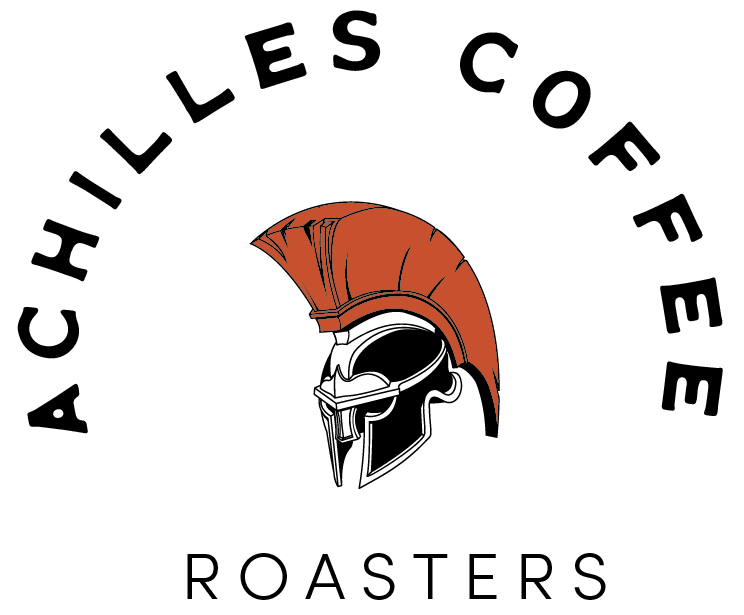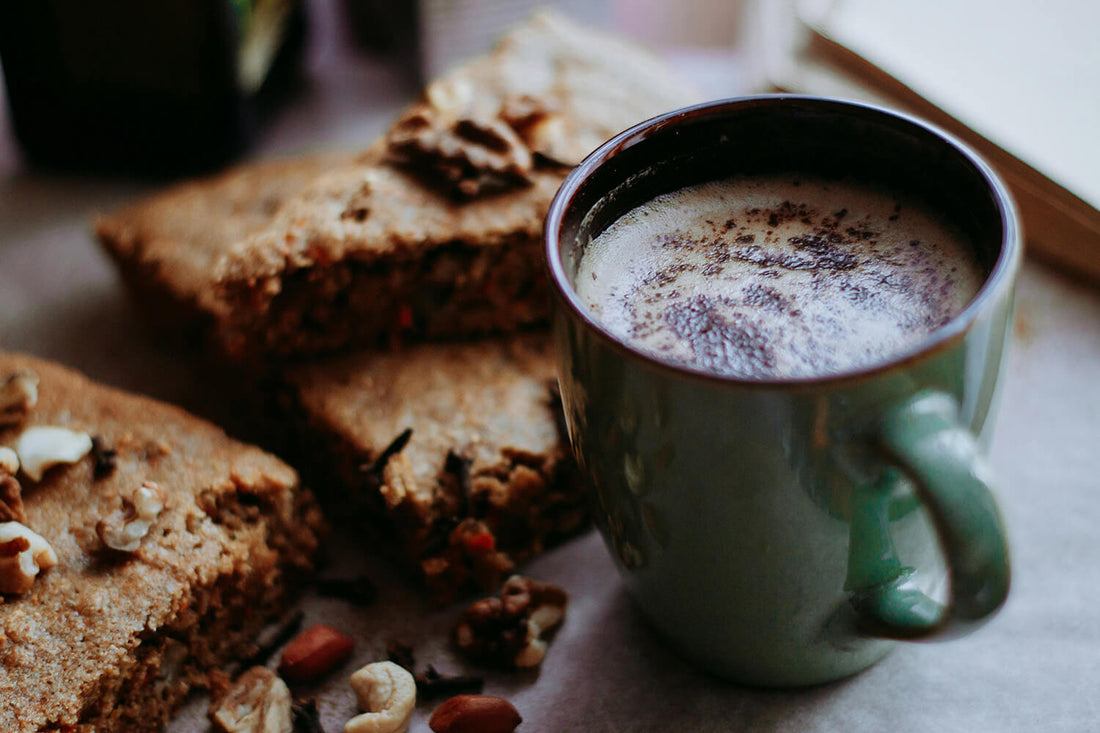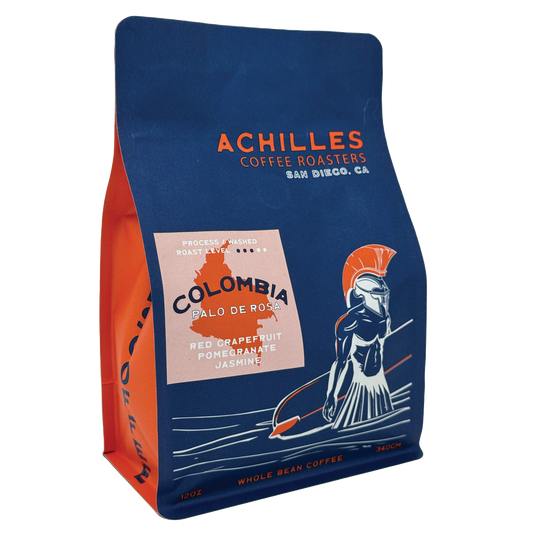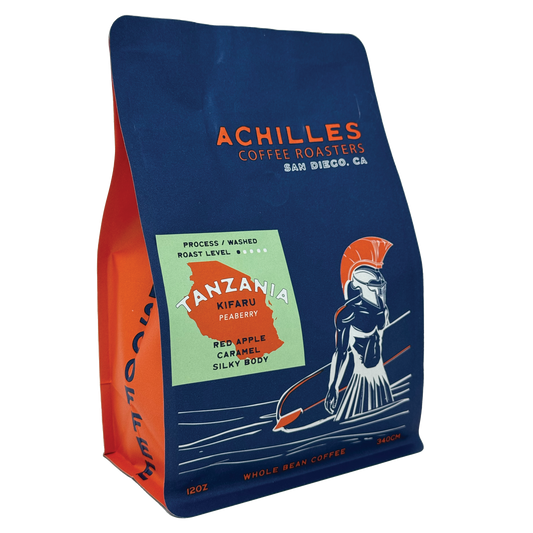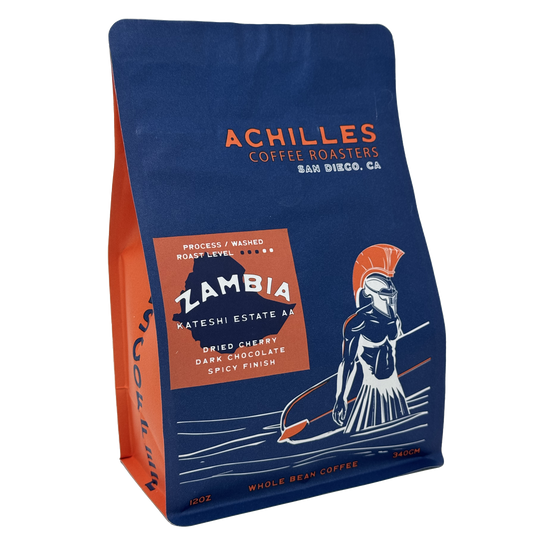Coffee isn’t just a way to wake up in the morning—it’s a remarkably complex beverage with hundreds of aromatic and flavor compounds that can either harmonize beautifully with food or clash dramatically if the pairing isn’t right. Much like how wine enthusiasts carefully pair varietals with specific dishes to accentuate subtle characteristics, thoughtful coffee and food pairing allows you to unlock new dimensions of flavor, texture, and aroma in both the cup and on the plate.
Unlike wine, however, coffee’s versatility is amplified by its wide spectrum of roast levels. A bright, fruity light roast brewed as a pour-over brings out completely different qualities than a syrupy, full-bodied dark roast pulled as espresso. Each roast interacts with sweet and savory foods in unique ways—sometimes highlighting delicate fruit notes, other times complementing rich, chocolatey desserts or hearty savory dishes.
Whether you’re drawn to the lively acidity of light roasts, the balanced sweetness of medium roasts, or the deep, bold intensity of dark roasts, understanding how to pair them can elevate your coffee experience from ordinary to extraordinary. A simple croissant and light roast coffee can feel elegant and refined, while a dark roast espresso alongside a flourless chocolate cake can become a deeply indulgent pairing.
In this comprehensive coffee and food pairing guide, we’ll break down how roast levels influence flavor, explore pairings for both sweet and savory dishes, and offer practical tips to craft pairings like a pro. With just a bit of knowledge, you can transform your everyday cup into a memorable culinary moment, whether you’re enjoying a quiet morning at home or hosting an elevated brunch.
Why Coffee and Food Pairing Matters
Coffee’s natural complexity comes from a combination of origin, processing method, and roast profile, each contributing unique flavor notes, varying levels of body, and different degrees of acidity. This complexity gives coffee an incredible versatility at the table—it can act as a complement, a contrast, or even a bridge between different flavor elements in food.
Pairing the right food with the right coffee isn’t just about what “tastes good.” When done thoughtfully, it can:
-
Enhance both the drink and the dish by amplifying complementary flavors. A fruity coffee can make a berry tart taste more vibrant, while a nutty medium roast can bring out subtle flavors in a buttery pastry.
-
Balance acidity, bitterness, and sweetness to create a harmonious experience. A bright light roast can cut through rich desserts, while a dark roast can temper sweetness and add depth.
-
Highlight subtle tasting notes you might otherwise miss. Pairing can draw attention to floral aromas, spice undertones, or caramelized sugars hidden in the cup.
-
Elevate everyday coffee rituals, making even a simple morning cup feel intentional, elegant, and indulgent.
Think of pairing as a dialogue between coffee and food, where each brings something to the table. A delicate, citrusy light roast might dance beautifully with a lemon tart or a fruit-forward dessert, accentuating both brightness and sweetness. In contrast, a deep, smoky dark roast can hold its own next to a flourless chocolate cake or even savory dishes like grilled meats, where its roasted, caramelized notes mirror those in the food.
By understanding coffee’s structure and how flavors interact, you can craft pairings that feel balanced, dynamic, and memorable—whether you’re hosting a brunch, enjoying an afternoon treat, or curating a full coffee tasting experience.
Understanding Roast Levels and Their Flavor Profiles
Before exploring specific coffee and food pairings, it’s important to understand how roast level fundamentally shapes flavor, body, and aroma. Roast level is one of the biggest determinants of how coffee interacts with different foods, setting the stage for whether a pairing feels harmonious or jarring. Here’s a closer look at the three main roast categories and how they influence flavor:
Light Roasts
Light roasts are known for their bright acidity, delicate floral and fruity notes, and tea-like body. Because the beans are roasted for a shorter time at lower temperatures, they retain more of their origin characteristics—the unique flavors imparted by the region’s terroir, altitude, and processing method. You might encounter notes like citrus, jasmine, berries, or tropical fruits. Light roasts shine when paired with foods that complement or highlight their brightness, such as fruit-based desserts, pastries with citrus glazes, or even tangy cheeses that accentuate their lively profile.
Medium Roasts
Medium roasts strike a harmonious balance between the natural flavors of the coffee and the sweetness developed during roasting. The result is often a rounded mouthfeel, moderate acidity, and flavor notes like caramel, nuts, milk chocolate, and red fruits. Because of this balance, medium roasts are highly versatile for pairing—they can complement both sweet and savory dishes. Think buttery croissants, chocolate chip cookies, nutty cakes, or even roasted poultry and creamy brunch dishes.
Dark Roasts
Dark roasts are roasted to higher temperatures for longer periods, producing a bold, smoky, bittersweet flavor profile with a heavy body. Notes often include dark chocolate, toasted nuts, spice, molasses, and sometimes a hint of smokiness or char. The acidity is lower, and the sweetness comes from caramelization rather than the bean’s natural characteristics. Dark roasts pair beautifully with rich, indulgent foods—think chocolate cake, tiramisu, grilled meats, or buttery pastries that can stand up to the coffee’s intensity.
Each roast level interacts with food differently. Light roasts elevate brightness and nuance, medium roasts create harmony and balance, and dark roasts enhance richness and depth. By aligning pairings with these core characteristics, you can create combinations that either complement, contrast, or amplify the flavors in both the coffee and the dish, turning an ordinary moment into an exceptional sensory experience.
Best Food Pairings for Light Roast Coffee
Light roast coffees often originate from high-elevation regions like Ethiopia or Kenya, where the cooler climate and slower cherry development create denser beans with intricate acidity and delicate fruit or floral notes. These coffees are prized for their clarity, brightness, and layered complexity, making them ideal for drinkers who appreciate nuanced flavors. Because their profiles are so refined, light roasts are best enjoyed black or with minimal additions, allowing their natural characteristics to shine.
Pairing food with light roasts is all about complementing their lively acidity and crisp, tea-like mouthfeel without overpowering the subtleties. Here are some excellent pairing ideas:
1. Fruity & Citrus Desserts
Lemon tarts, orange scones, grapefruit bars
Citrus-forward desserts mirror the bright, tangy acidity found in many light roast coffees, especially those from East Africa. The sweetness in the dessert provides balance, preventing the pairing from becoming overly sharp, while citrus elements accentuate the coffee’s inherent fruitiness.
2. Yogurt Parfaits and Fresh Fruit
Berries, melon, tropical fruits
Fresh fruits and yogurt amplify a light roast’s natural fruit and floral notes. Berries echo the berry-like sweetness often found in natural-processed Ethiopian coffees, while tropical fruits like mango or papaya highlight subtle exotic undertones. The creaminess of yogurt provides a gentle contrast to the coffee’s crisp finish.
3. Light Pastries
Croissants, brioche, madeleines, shortbread
Delicate, buttery pastries pair beautifully with light roasts because their rich, flaky texture contrasts with the coffee’s clean, tea-like body. Rather than competing with the coffee’s flavors, these pastries provide a neutral, indulgent base that lets the coffee’s brightness stand out.
4. Soft Cheeses
Mild goat cheese or brie with fruit compote
The tangy and creamy elements of soft cheeses harmonize with the floral and citrus notes of light roast coffees. When served with a touch of fruit compote—like fig, apricot, or berry—it creates a layered pairing experience that’s elegant and balanced, perfect for brunch or an afternoon tasting.
Pro Tip
Light roasts truly shine when brewed using pour-over or Chemex methods, which emphasize clarity and acidity. Serve them alongside delicate dishes at brunch or afternoon gatherings to create a refined, café-like experience at home. This approach allows both the coffee and the food to express their unique characteristics, resulting in a harmonious and memorable pairing.
Best Food Pairings for Medium Roast Coffee
Medium roasts sit at the sweet spot between light and dark roasts, offering a balanced interplay of sweetness, acidity, and body. This makes them incredibly versatile for both brewing and food pairing. Their approachable, crowd-pleasing profiles allow them to complement a wide variety of dishes, whether you’re enjoying a relaxed weekday breakfast or hosting a more curated coffee-and-dessert pairing.
Here are some thoughtful pairing ideas to bring out the best in your medium roast:
1. Baked Goods
Banana bread, cinnamon rolls, muffins, biscotti
The warm spices and natural sweetness of baked goods mirror the caramel, nutty, and mild chocolate notes typically found in medium roasts. Cinnamon rolls, for example, highlight the coffee’s sweet backbone, while biscotti provides a satisfying crunch that pairs well with a medium-bodied cup. Banana bread’s richness is especially harmonious with coffees that lean toward nutty or toffee-like undertones.
2. Chocolate & Caramel Desserts
Milk chocolate bars, brownies, toffee pudding
Medium roasts pair beautifully with creamy, sweet desserts without overpowering their flavors. The smooth body and balanced acidity help elevate chocolate’s richness, while caramel-based desserts bring out the coffee’s subtle toasted sugar notes. A warm brownie alongside a medium roast drip coffee creates a comforting, decadent combination.
3. Breakfast Favorites
Pancakes, waffles, oatmeal with brown sugar, granola
Medium roasts have enough roundness and body to pair well with heartier morning dishes. The coffee’s balanced flavor profile complements buttery pancakes and waffles, while the brown sugar in oatmeal or granola echoes the roast’s caramelized sweetness. This makes medium roasts an excellent everyday companion for breakfast rituals.
4. Savory Brunch Dishes
Avocado toast, quiche, egg sandwiches
Unlike lighter roasts, medium roasts have enough structure to stand alongside savory dishes without their acidity clashing with eggy or buttery flavors. Quiche’s creamy texture pairs seamlessly with a medium roast’s smooth mouthfeel, while the toasty bread in avocado toast plays off nutty coffee notes. This versatility is why many cafés use medium roasts for their house drip or batch brew—they pair well with almost any menu item.
Pro Tip
Medium roasts shine when brewed with drip machines, French press, or AeroPress. These methods highlight their rounded sweetness and balanced acidity, making them ideal for both casual mornings and more curated coffee experiences. Whether paired with a cinnamon roll, a hearty brunch, or a milk chocolate dessert, medium roasts are the ultimate all-rounders for pairing.
Best Food Pairings for Dark Roast Coffee
Dark roasts are all about intensity and depth. Their extended roasting time brings out deep caramelization, resulting in flavors of dark chocolate, spice, toasted nuts, and occasionally a subtle smokiness. This makes them ideal for pairing with foods that can stand up to their bold character, whether sweet or savory.
Here are some of the best ways to pair dark roasts with food:
1. Chocolate Desserts
Flourless chocolate cake, chocolate truffles, chocolate mousse
The bittersweet depth of dark roast coffee beautifully amplifies the richness of cocoa-based desserts. A flourless chocolate cake’s dense, fudgy texture pairs perfectly with a strong dark roast, enhancing its intense chocolate notes. Chocolate truffles and mousse offer creamy textures that contrast the roast’s bold, slightly bitter edge, creating a harmonious balance between sweet and roasted flavors.
2. Spiced or Nutty Baked Goods
Gingerbread, pecan pie, spiced biscotti
Warm spices such as cinnamon, clove, ginger, and nutmeg mirror the smoky and toasty undertones of dark roasts. A slice of gingerbread alongside a dark roast drip or espresso can highlight subtle molasses and spice notes in both. Pecan pie brings a nutty sweetness that balances the roast’s strength, while spiced biscotti provides a delightful crunch for dipping into an intense cup.
3. Savory & Umami-Rich Dishes
Grilled meats, smoked brisket, bacon, charcuterie
Dark roasts excel when paired with rich, savory foods. Their bold flavors cut through fat and smoke, complementing umami-rich dishes beautifully. A smoky brisket or a charcuterie board with cured meats pairs exceptionally well with a dark roast brewed via French press or moka pot, where the coffee’s body and roasted notes shine. This pairing elevates both elements, much like pairing red wine with steak.
4. Aged Cheeses
Sharp cheddar, parmesan, manchego
Salty, crystalline cheeses offer a complex contrast to dark roast’s bittersweet edge. Aged cheddar brings a tangy sharpness, parmesan offers nutty depth, and manchego provides a buttery, slightly grassy finish. These flavors interact beautifully with the caramelized and smoky notes of dark roasts, making for a sophisticated pairing that works well for afternoon breaks or after-dinner coffee courses.
Pro Tip
Dark roasts are at their best when brewed using methods that emphasize body and intensity, such as espresso, moka pot, or cold brew. Espresso highlights the roast’s bittersweet chocolate and spice, moka pot delivers bold and concentrated flavors, and cold brew smooths out the bitterness while retaining depth—perfect for pairing with rich desserts or hearty dishes.
By choosing pairings that match the power of dark roasts, you can transform an everyday cup into a bold, memorable culinary experience.
Bonus Pairing: Cold Brew & Iced Coffee
Cold brew’s slow steeping process highlights sweetness, low acidity, and chocolatey notes, making it fantastic with:
-
Nutty desserts like biscotti or almond cake
-
Ice cream—cold brew affogato is a simple but elegant treat
-
Summer fruit tarts, where sweetness complements mellow coffee flavors
Iced coffee brewed hot and then chilled retains more acidity, making it a better partner for fruit-forward or citrusy desserts.
Regional Pairing Inspiration
You can also pair based on origin characteristics:
-
Ethiopian Light Roast with blueberry scones or lemon pound cake.
-
Guatemalan Medium Roast with caramel flan or almond biscotti.
-
Brazilian Dark Roast with chocolate cake or grilled meats.
Matching flavor profiles and textures creates balance and accentuates the coffee’s unique terroir.
Common Coffee and Food Pairing Mistakes
Even great coffee can clash with food if pairing is approached carelessly. Avoid these pitfalls:
-
Pairing very acidic coffee with equally tart food (e.g., Kenyan light roast with lemon bars) can overwhelm your palate.
-
Matching dark roasts with delicate desserts can make the food taste bland in comparison.
-
Using flavored syrups or heavy cream during tastings can mask subtle notes, making pairings less effective.
-
Serving food that’s too spicy or heavily seasoned may overpower the coffee entirely.
Pro Tips for Successful Pairings
-
Taste the coffee first to identify its dominant flavors and intensity.
-
Match intensity levels—light coffee with delicate food, dark coffee with bold flavors.
-
Play with contrasts (e.g., acidic coffee with creamy pastries) to create balance.
-
Experiment: Pair the same dish with different roasts to discover surprising combinations.
Conclusion: Elevate Your Coffee Experience Through Pairing
Coffee and food pairing is a simple yet powerful way to elevate your daily coffee ritual into a multi-sensory experience. By taking the time to understand roast profiles and flavor dynamics, you can craft pairings that highlight the unique strengths of both the drink and the dish.
Think of it less as a strict set of rules and more as a conversation between flavors. When acidity, sweetness, bitterness, and texture are balanced thoughtfully, both the coffee and the food taste more vibrant and memorable.
For example, a light, citrusy Ethiopian pour-over paired with a lemon tart brings out bright, zesty notes that linger beautifully on the palate. A medium-roast Guatemalan brew with banana bread creates a cozy, harmonious pairing where warm spices and gentle sweetness complement nutty and caramel undertones. Meanwhile, a dark Brazilian espresso alongside flourless chocolate cake intensifies cocoa richness and adds bittersweet depth, turning dessert and coffee into a decadent moment.
Pairing doesn’t require fancy equipment or professional training—it’s about intentionality. The next time you brew a cup, think beyond the mug. Consider what’s on the plate beside it. A simple pastry, fruit, or savory bite can transform your perception of the coffee’s flavors and make each sip more engaging.
By experimenting with different pairings and roast levels, you’ll develop a sharper palate and a deeper appreciation for coffee’s incredible versatility. Your taste buds will thank you for it.
